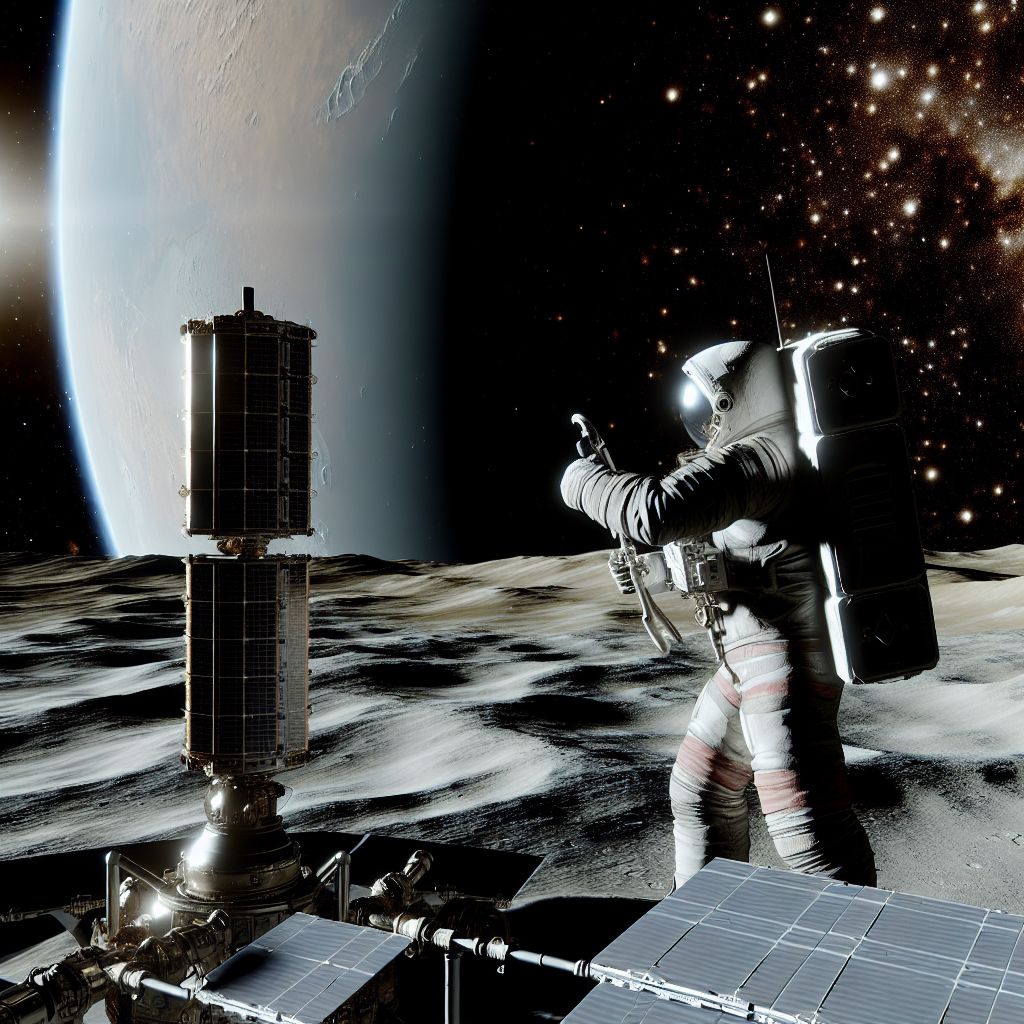Deutsch: Raue Weltraumumgebung / Español: Entorno espacial adverso / Português: Ambiente espacial hostil / Français: Environnement spatial difficile / Italiano: Ambiente spaziale ostile
Harsh Space Environment in the Space industry context refers to the extreme and unforgiving conditions encountered beyond Earth's Atmosphere, which present significant challenges to Spacecraft, satellites, and human spaceflight. This environment is characterized by a Vacuum, extreme temperatures, microgravity, high levels of radiation, and the presence of micrometeoroids and space debris. These factors necessitate Robust Design and innovative technologies to ensure the survival and functionality of space missions.
Description

The harsh space environment poses unique challenges to the Engineering and operation of space vehicles and habitats. The vacuum of space eliminates air for cooling and requires spacecraft to have their own life support systems. Temperature variations can be extreme, from intensely hot when directly exposed to the sun to bitterly cold in the shadow of Earth or another body. Microgravity affects fluid dynamics and human Physiology, complicating life support and Fuel management. Radiation from the sun and cosmic rays presents hazards to electronics and living tissues, requiring effective shielding. Lastly, micrometeoroids and orbiting debris threaten physical damage to spacecraft and satellites.
Application Areas
Understanding and mitigating the effects of the harsh space environment is Critical across all areas of space Activity, including:
- Satellite Design and Operation: Ensuring functionality over long durations in Orbit.
- Human Spaceflight: Protecting astronauts from radiation, providing life support, and mitigating the effects of microgravity on the human body.
- Interplanetary Missions: Designing spacecraft capable of enduring the long journey through space to destinations like Mars or beyond.
- Space Habitats: Developing living spaces that can support human life in deep space or on other planets.
Well-Known Examples
- The International Space Station (ISS) serves as a prime example of engineering designed to withstand the harsh conditions of space, offering insights into human adaptation to microgravity and providing Data on radiation protection.
- The Hubble Space Telescope operates in the harsh environment of space, utilizing solar shields to manage temperature fluctuations and maintain its sensitive instruments.
- The Mars rovers, such as Curiosity and Perseverance, are designed to operate in the extreme conditions of the Martian surface, facing significant temperature swings and Dust storms.
Treatment and Risks
Addressing the challenges of the harsh space environment involves:
- Thermal Control Systems: To manage the wide temperature extremes.
- Radiation Shielding: Utilizing materials and design strategies to protect electronics and humans from high-Energy particles.
- Robust Materials: Developing materials that can withstand the vacuum of space, resist micrometeoroid impacts, and endure the corrosive effects of space radiation.
- Life Support Systems: Creating closed-loop systems capable of providing air, Water, and food for crewed missions.
Similar Terms or Synonyms
- Space environment challenges
- Outer space conditions
- Extreme space conditions
Summary
The harsh space environment encompasses the extreme conditions faced in outer space, including vacuum, temperature extremes, microgravity, radiation, and debris. Successfully designing and operating spacecraft, satellites, and habitats within this environment requires innovative solutions to overcome its challenges, ensuring the longevity and success of space missions.
--
Related Articles to the term 'Harsh Space Environment' | |
| 'Harsh' | ■■■■■■■■■■ |
| Harsh refers to environments or conditions that are difficult, extreme, or challenging in some way. Harsh . . . Read More | |
| 'Environmental Resistance' | ■■■■■■■■■■ |
| Environmental Resistance: Environmental resistance in the Space industry refers to the capacity of spacecraft, . . . Read More | |
| 'Earth' | ■■■■■■■■■ |
| The Earth plays a central role in the aerospace industry, as it is the planet where all aerospace vehicles . . . Read More | |
| 'Endurance' | ■■■■■■■■■ |
| In the Space industry context, endurance refers to the ability of spacecraft, satellites, or any space-related . . . Read More | |
| 'Material Compatibility' | ■■■■■■■■■ |
| Material Compatibility: Material compatibility in the Space industry refers to the ability of different . . . Read More | |
| 'Robust Design' | ■■■■■■■■■ |
| Robust Design in the Space industry context refers to the approach of creating spacecraft, satellites, . . . Read More | |
| 'Aging' | ■■■■■■■■■ |
| Aging in the context of the Space industry refers to the gradual degradation and wear of spacecraft materials, . . . Read More | |
| 'Coating' | ■■■■■■■■■ |
| Coating in the Space industry context refers to the application of thin layers of material on surfaces . . . Read More | |
| 'Shielding' | ■■■■■■■■ |
| Shielding in the space industry refers to the protective measures and materials used to safeguard spacecraft, . . . Read More | |
| 'Erosion' | ■■■■■■■■ |
| In the Space industry context, erosion refers to the wear and degradation of materials and surfaces exposed . . . Read More | |
